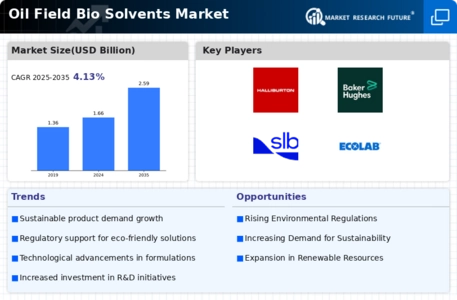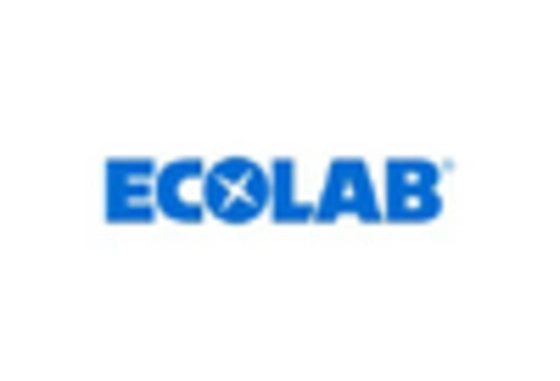Environmental Regulations
The increasing stringency of environmental regulations is a pivotal driver for the Oil Field Bio Solvents Market. Governments worldwide are implementing stricter guidelines to mitigate the environmental impact of oil extraction processes. This regulatory landscape compels companies to adopt bio-based solvents, which are less harmful to ecosystems compared to traditional solvents. As a result, the market for bio solvents is projected to grow, with estimates suggesting a compound annual growth rate of around 8% over the next five years. The shift towards compliance with these regulations not only enhances corporate responsibility but also opens avenues for innovation in the development of eco-friendly products within the Oil Field Bio Solvents Market.
Technological Innovations
Technological innovations are driving advancements in the Oil Field Bio Solvents Market, enabling the development of more efficient and effective bio-based solvents. Recent breakthroughs in extraction and formulation technologies have led to the creation of solvents that not only meet performance standards but also reduce environmental impact. For instance, advancements in biotechnology have facilitated the production of bio solvents from agricultural waste, enhancing sustainability. The market is witnessing a surge in research and development activities aimed at optimizing these technologies, which could lead to a projected market growth of approximately 10% annually. This technological evolution is crucial for the Oil Field Bio Solvents Market as it aligns with the increasing demand for high-performance, eco-friendly solutions.
Cost-Effectiveness of Bio Solvents
The cost-effectiveness of bio solvents compared to traditional solvents is emerging as a significant driver in the Oil Field Bio Solvents Market. As production processes for bio solvents become more refined, the cost of manufacturing is decreasing, making them a viable alternative for oil companies. This economic advantage is particularly appealing in a competitive market where operational costs are under constant scrutiny. Market analysis suggests that the price parity between bio solvents and conventional solvents could be achieved within the next few years, further accelerating adoption rates. Consequently, the cost-effectiveness of bio solvents is likely to enhance their market penetration, thereby shaping the future landscape of the Oil Field Bio Solvents Market.
Rising Demand for Sustainable Solutions
The growing consumer and corporate demand for sustainable solutions is significantly influencing the Oil Field Bio Solvents Market. As stakeholders increasingly prioritize sustainability, oil companies are seeking alternatives to conventional solvents that align with eco-friendly practices. This trend is evident in the rising adoption of bio solvents, which are derived from renewable resources and exhibit lower toxicity. Market data indicates that the bio solvents segment is expected to capture a larger share of the overall solvents market, potentially reaching a valuation of USD 1.5 billion by 2026. This shift not only reflects changing consumer preferences but also highlights the potential for bio solvents to play a crucial role in the future of the Oil Field Bio Solvents Market.
Increased Investment in Renewable Resources
The surge in investment in renewable resources is a crucial driver for the Oil Field Bio Solvents Market. As the global energy landscape shifts towards sustainability, investors are increasingly channeling funds into the development of bio-based products, including solvents. This influx of capital is fostering innovation and scaling production capabilities, which are essential for meeting the rising demand for eco-friendly solutions. Recent reports indicate that investments in renewable resource technologies are expected to exceed USD 200 billion by 2027, highlighting the financial commitment to sustainable practices. This trend not only supports the growth of the Oil Field Bio Solvents Market but also reinforces the broader transition towards a more sustainable energy future.


















Leave a Comment